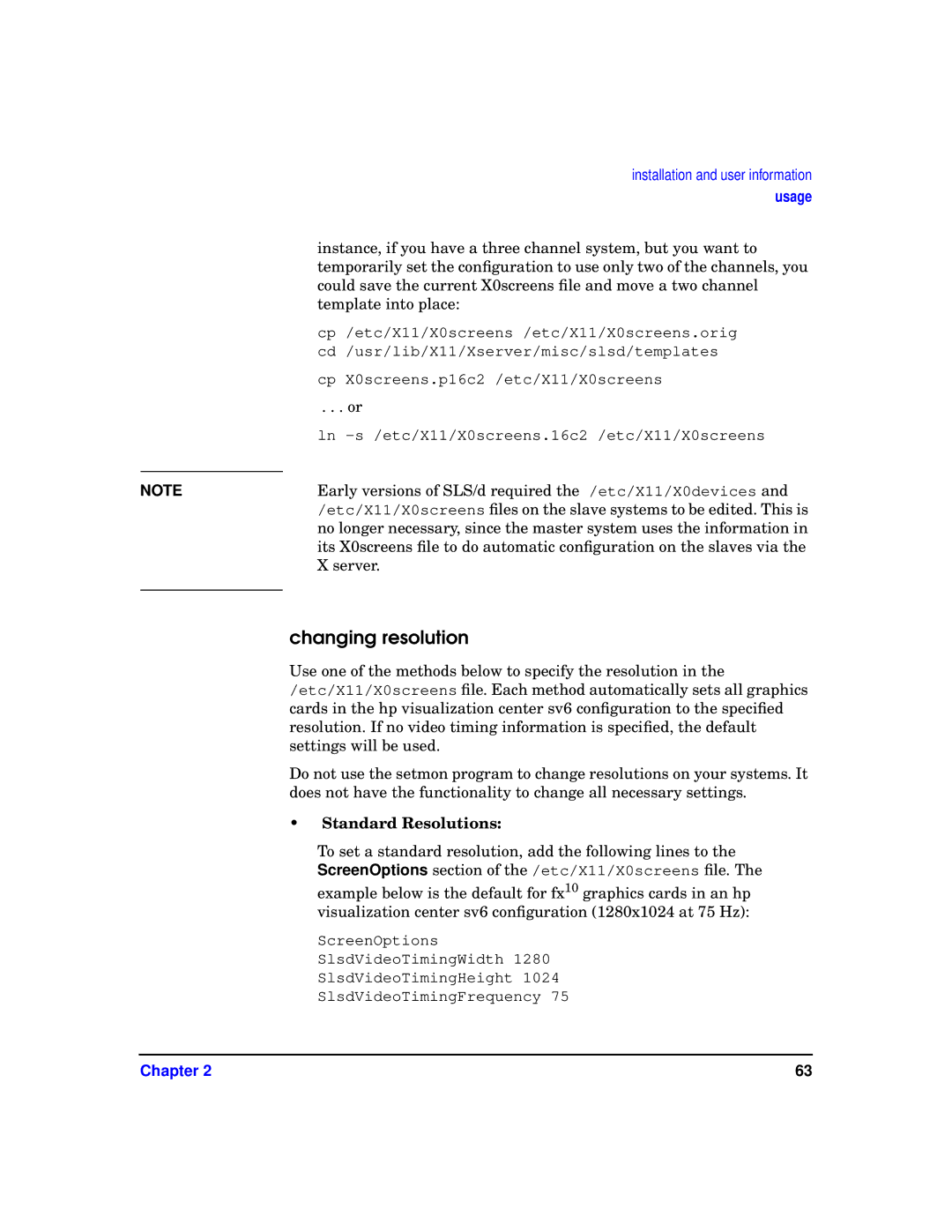installation and user information usage
| instance, if you have a three channel system, but you want to |
| temporarily set the configuration to use only two of the channels, you |
| could save the current X0screens file and move a two channel |
| template into place: |
| cp /etc/X11/X0screens /etc/X11/X0screens.orig |
| cd /usr/lib/X11/Xserver/misc/slsd/templates |
| cp X0screens.p16c2 /etc/X11/X0screens |
| . . . or |
| ln |
| Early versions of SLS/d required the /etc/X11/X0devices and |
NOTE | |
| /etc/X11/X0screens files on the slave systems to be edited. This is |
| no longer necessary, since the master system uses the information in |
| its X0screens file to do automatic configuration on the slaves via the |
| X server. |
|
|
changing resolution
Use one of the methods below to specify the resolution in the /etc/X11/X0screens file. Each method automatically sets all graphics cards in the hp visualization center sv6 configuration to the specified resolution. If no video timing information is specified, the default settings will be used.
Do not use the setmon program to change resolutions on your systems. It does not have the functionality to change all necessary settings.
• Standard Resolutions:
To set a standard resolution, add the following lines to the ScreenOptions section of the /etc/X11/X0screens file. The
example below is the default for fx10 graphics cards in an hp visualization center sv6 configuration (1280x1024 at 75 Hz):
ScreenOptions
SlsdVideoTimingWidth 1280
SlsdVideoTimingHeight 1024
SlsdVideoTimingFrequency 75
Chapter 2 | 63 |
